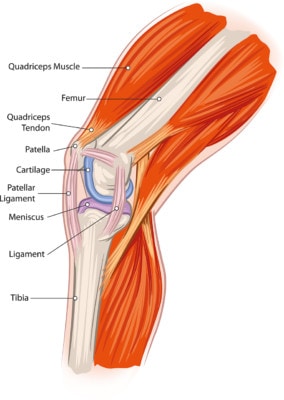Removing part of the Meniscus Increases unwanted Muscle Activity of the Knee

EreborMountain/Shutterstock
Partial menisectomy means removing part of the meniscus. It’s the most common knee surgery in the U.S. and is usually performed when there’s a torn meniscus in an area that won’t heal well with surgical repair (which is most of the meniscus or the white zone without good blood supply). Since the meniscus is a stabilizer of the knee joint and acts both as a spacer and helps to guide normal motion, a recent study looked at the consequences in terms of muscle activity, of removing parts of the meniscus. The muscles around the knee are stabilizers as well, and tend to be overactive when the knee joint becomes unstable. This over activity can lead to chronic overload of the muscle (meaning the muscle or where it attaches to the bone is chronically painful or sore as it’s being asked to do a job that it’s not designed to perform) as well as changes in the way the joint moves and over the long-run, more arthritis. In this study, the patients who had part of their meniscus removed had a generalized increase in unwanted muscle activity. This extra muscle activity seemed to be trying to stabilize the knee and keep it from drifting inward. We see quite a few knee meniscus surgery patients who are left with a lax medial collateral ligament (the duct tape that normally helps to stabilize the inside portion of the knee), so this makes some sense. The study authors concluded that this higher level of muscle activity will likely increase loads on the knee and lead to more arthritis (extra forces=more wear and tear). The solution to this problem? Don’t have sections of the meniscus cut out if you can avoid it. This blog post discusses many different studies that all weigh in on whether knee meniscus surgery is a good idea.

If you have questions or comments about this blog post, please email us at [email protected]
NOTE: This blog post provides general information to help the reader better understand regenerative medicine, musculoskeletal health, and related subjects. All content provided in this blog, website, or any linked materials, including text, graphics, images, patient profiles, outcomes, and information, are not intended and should not be considered or used as a substitute for medical advice, diagnosis, or treatment. Please always consult with a professional and certified healthcare provider to discuss if a treatment is right for you.
